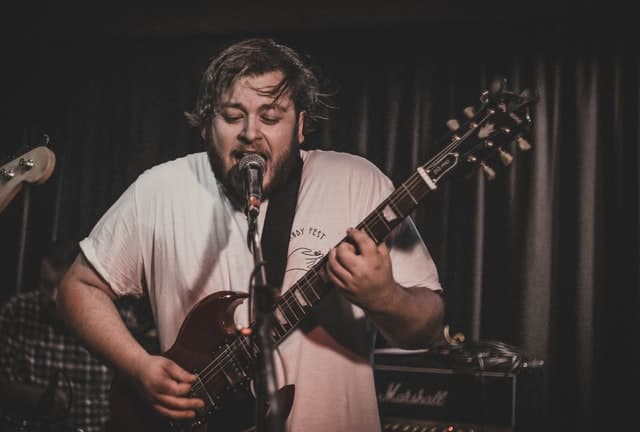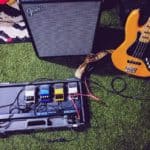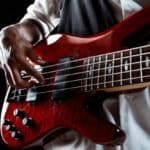Reggae is such an iconic sound. Popularized by giants like Bob Marley, Peter Tosh, and Jimmy Cliff, the laid-back island feel is perfect for a relaxed jam session. Reggae is characterized by its rhythmic emphasis on the offbeats, but what about the tone?
Reggae tone is formed with three elements: the pickup option you choose for your guitar, the settings and effects on your amp, and the way you play. Bright and clean tones are usually preferred, so single-coils are king, and so clean amp sounds. For effects: Wah, delay, and modulation are a must.
I’d go so far as to say that before you add any effects to color your tone, you should master the rhythmic aspects of reggae. Today we’re going to focus mainly on the tonal aspect of the music, but we’ll look at some techniques for playing as well.
What makes a good reggae guitar tone?
Before we can talk about guitar tone, we need to discuss a bit of what makes Reggae… well, reggae.
The guitar fits into an arrangement of other instruments and it’s made to complement its accompaniment, but the electric guitar is more of an accessory than the main musical voice in reggae, unlike most other genres of music.
In reggae, the bass sits up front in the mix and drives a lot of the rhythm and the electric guitar riffs often mirror a lot of what the bass is doing. The average tempo of reggae is between 80 – 100 BPM, a little slower than more commercial genres.
This is because of the strong groove aspect of reggae which just wouldn’t work in a more upbeat tempo.
So mechanics aside and context provided, we can now discuss what makes a good reggae guitar tone.
Because it has to compliment the bass, the guitar tone often contrasts the low warms of the bass with a sharp, bright cleanliness of tone.
Good reggae guitar tone doesn’t often use a lot of effects and while it’s as simple as turning up the treble, most of the tone comes from how you play.
How to set up your guitar for reggae?
Good reggae tone is usually bright and clean. Some effects are used, but they’re done so sparingly. If you have single-coil pickups on your guitar, you’ll want to use the bridge and middle pickups or a combination of both.
Humbuckers seem to be less commonly used for reggae guitar playing, but they are naturally bright and should work just as well. You might up the volume on your guitar to give it that extra pop while picking.
Finally, the gauge of your strings will also play a part in the tone of your guitar and since we’re aiming for bright and clear, a lighter gauge string will do this. If you’re thinking of incorporating bends, this will be made easier by the thinner strings too.
Best amp settings for reggae
Most reggae is all about a bright snappy tone. You’ll need to up the treble on your guitar for this, but also give it some mids. I tend to leave the bass pretty low when playing reggae simply because so much of the bass is pushed by other instruments already.
We should keep in mind that music is subjective, as is your taste for settings, but there is a general range.
- For tube amps, keep the volume below a 6 so you don’t get too much drive
- On solid-state amps, turn the drive low, no more than 5, this will keep the clarity and avoid muddiness
- Treble set to around 5 or above, this is to contrast that bass and cut through the mids
- Bass should be kept low or at zero to avoid muddiness
- Your mid-EQ can be kept around 4 or 5 as well, just to give your
If you have effects on your amp, there are a few that work quite nicely with reggae music, and we’ll discuss that in the next section.
Must have guitar effects for reggae
Wah
In reggae, a Wah pedal is either a nice accompaniment in a full band or a great way for a solo guitarist to create the genre’s iconic sounds.
If you’re not sure what a Wah pedal does, essentially, it moves your guitar’s tone knob control to a foot switch. It can be used for the traditional syncopation found in reggae or as a static tone control.
Compression
Compression is important for keeping your guitar volume consistent while playing. A compressor pedal allows the rhythm guitarist to focus more on their rhythm playing than on their dynamics and also allows the lead guitarist to play up on the higher octaves without losing the clarity needed.
Compression is a must, regardless of how good your technique is, you’re never going to have the same velocity for each stroke.
Reverb
Reverb is used to create that spacious, dreamy effect found in reggae. It gives a thickness to the notes which helps with stressing the weak (off) beat and stretching it out.
Reverb isn’t necessarily an absolute must, but it’s great when mixed in with other effects throughout any song. You don’t want your whole song to feel spacious, but it might be used to great effect at different sections in your arrangement.
Delay
Often confused with reverb, delay pedals simply make an echo of the notes played on your guitar. Some built-in delays come with an automatic tempo adjustment so that you can get the delay falling on specific notes in your song.
Using Delay in reggae is best done with a pedal because you usually don’t want every note echoing, but just a specific note at the right time. This often requires a lot of practice to get right, but who said reggae was easy?
Phaser
A phaser creates cuts in the high end of an audio signal with the placement of those cuts being modulated up and down to different places on the audio spectrum. This gives that iconic phaser sound and it’s used to great effect in reggae.
The modulation of tone caused by a phaser pedal can be adjusted to get different feels in your music and in reggae, it helps to create that spacious feel. It’s also an effect used in moderation or on specific melodic lines so that you don’t oversaturate your composition.
Modern phasers come with around four effects, Rate, Depth, Resonance, and Stage. The rate affects how quickly the phaser modulates the sound, Depth/Intensity controls the volume of the phaser over the clean guitar, and Resonance controls which frequencies are boosted.
Stage is more to affect the overall sound and comes in steps from 4 – 12, each giving a slightly different tone to the phaser.
Distortion
Distortion is last because it’s usually the most optional effect. It can be really easy to muddy up your guitar sound in reggae if you overuse distortion or similar effects. They’re best kept at a low for an added bit of spice to your song.
A good reggae tone is also on your hands
While we may have discussed a lot of effects and tones to create a reggae song, it’s important to remember that none of that makes up for skill.
When it comes to reggae rhythm, it’s heavily focused on palm muting and adding a percussive feel to your guitar playing. A lot of modernized reggae sounds include the use of blues scales to give it a slightly more upbeat feel.
More traditional reggae relies on simple chord progressions and major and minor scales.
So while you can set up the tone for your guitar to be exactly like some of the greats, remember to also practice enough that you can reproduce the sound without overly relying on your guitar’s effects.

Hello there, my name is Ramiro and I’ve been playing guitar for almost 20 years. I’m obsessed with everything gear-related and I thought it might be worth sharing it. From guitars, pedals, amps, and synths to studio gear and production tips, I hope you find what I post here useful, and I’ll try my best to keep it entertaining also.





